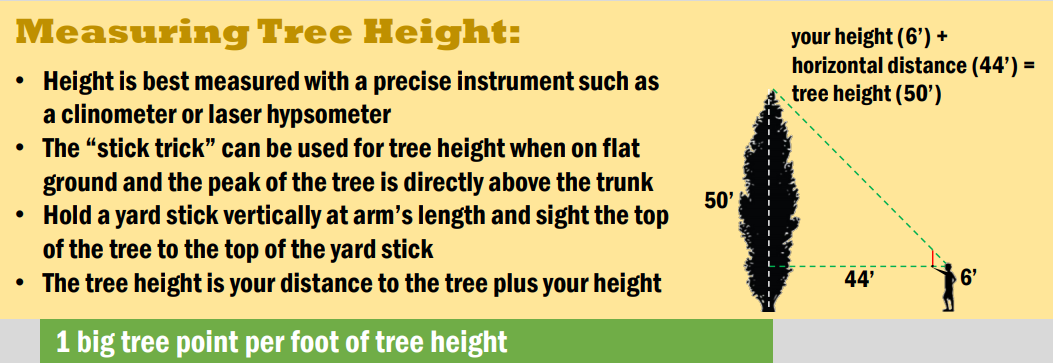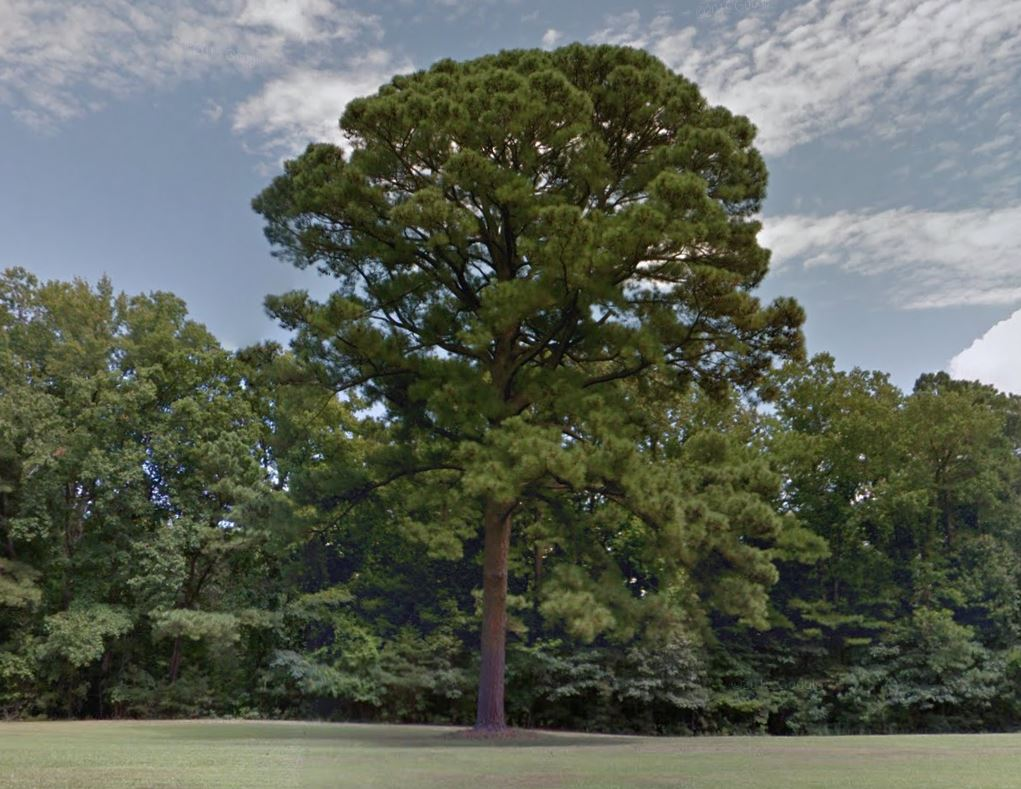Did you know Mariners’ Park is home to a national big tree? This tree is the biggest of its kind in the NATION! Right here in Newport News! You may be thinking about all the largest trees you’ve seen in the Park, wondering which one it might be. But, I bet, if you walked by it you wouldn’t even notice it! Our champion tree, which proudly sits on The National Register of Big Trees as designated by American Forests, is an evergreen bayberry that stands tall at a whopping 14 feet tall. You might be wondering, how did our tree get discovered? How did The National Register of Big Trees find out about it? Or that’s not that big!
As with any story, we have to start at the beginning! Our tree was originally added to The Virginia Big Tree Program website in 2015. But the Program itself began in 1970! You can check out all of the trees in the database here. The Program, run by Virginia Tech, “maintains a register of the 3 largest specimens of over 300 native, non-native, and naturalized tree species…The Virginia Big Tree Program is affiliated with the National Register of Champion Trees, which is administered by American Forests.” according to their website.
However, not just any tree can join The Virginia Big Tree Program! Trees submitted for consideration score points on three criteria; tree height, tree circumference, and crown spread. The total number of points determines if the tree qualifies.
1. It must be at least 13 feet tall. Measurements on the height of a tree use a clinometer or a laser hypsometer. The Minnesota Project Learning Tree has a great explanation of how to use a clinometer here. To learn about a laser hypsometer, click here for an excerpt from Joan DeYoung’s book, Forest Measurements An Applied Approach. Additionally, a stick method is also available, as outlined in the image below. Trees gain one point per foot of tree height in this category.
2. The tree must have a circumference of 9.5 feet or larger. Measurements on tree circumference are 4.5 feet above the ground. The image below shows how to get that measurement. Trees gain one point per inch of trunk circumference for this category.
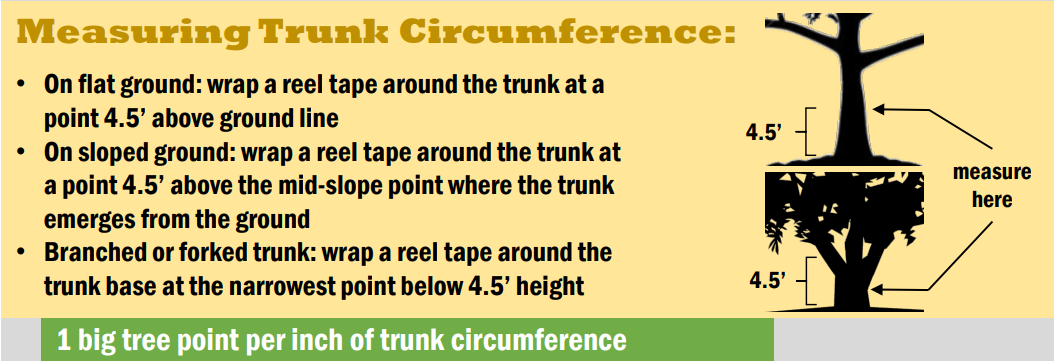
3. Lastly, is a measurement of the tree’s crown spread. The crown is everything above ground on a tree; this includes its branches and leaves extending out from the trunk. The spread is the width of the crown. The image below illustrates how to find the crown spread. Trees gain a ¼ point per foot of average crown spread for this category.
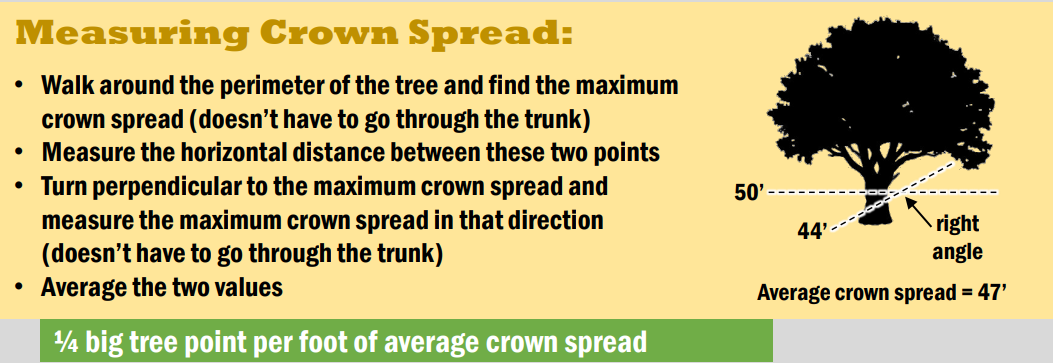
In 2015, Byron Carmean and Gary Williamson were measuring trees in the Mariners’ Park they thought might be contenders for The Virginia Big Tree Program. That day, they found two evergreen bayberry trees that seemed like contenders and submitted them to The Virginia Big Tree Program.
The first tree, pictured below, has a circumference of 6 inches, a height of 14 feet, and a crown spread of 14 feet for a total of 24 points.
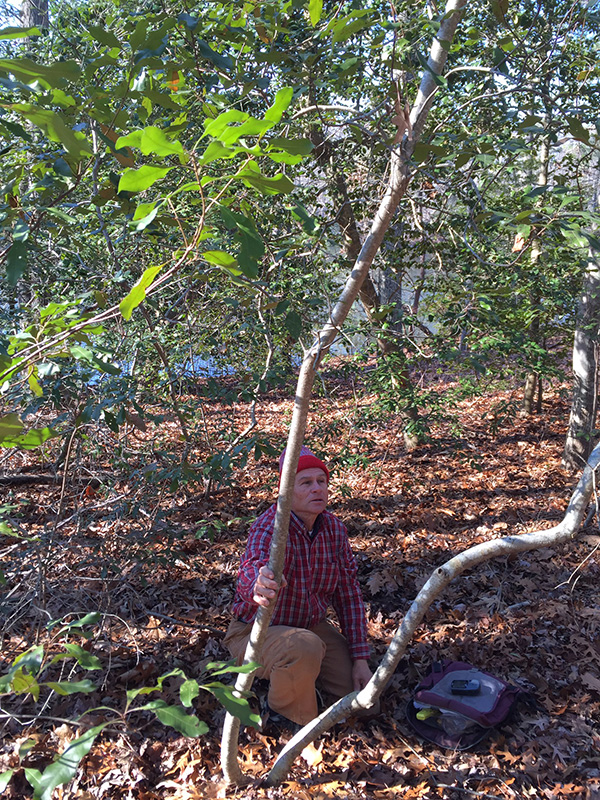
The second tree, pictured below, has a circumference of 7 inches, a height of 14 feet, and a crown spread of 10 feet for a total of 24 points.
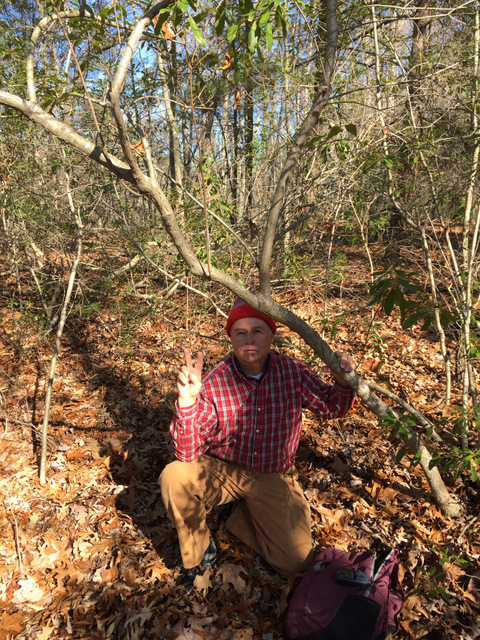
Later in 2015, Byron Carmean, Gary Williamson, and Dr. Eric Wiseman, Program Coordinator for The Virginia Big Tree Program, nominated these two evergreen bayberry trees for The National Register of Champion Trees. In September of 2018, they were both accepted as tied for, “the largest known tree of its species in the country as reported to American Forests.” To learn more about evergreen bayberry trees, click here!
Additionally, four other trees in the Park are on The Virginia Big Tree Program website:
1. Mountain-laurel: measured in 2016. It has a circumference of 26 inches, a height of 27 feet, and a crown spread of 21 feet for a total of 58 points. Byron Carmean, Gary Williamson, Preston Cross, and Rand Milam submitted the tree.
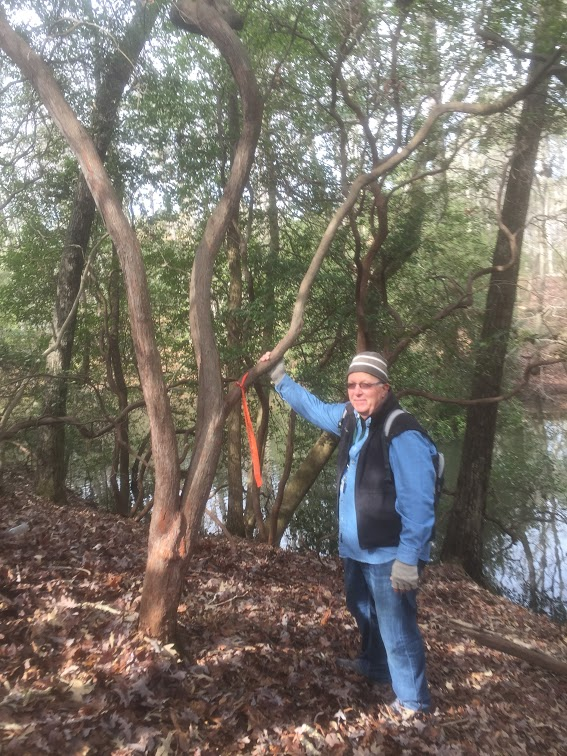
2. Mountain-laurel: measured in 2016. It has a circumference of 25 inches, a height of 27 feet, and a crown spread of 19 feet for a total of 57 points. Byron Carmean, Gary Williamson, Preston Cross, and Rand Milam submitted the tree. No pictures submitted.
3. Loblolly pine: measured in 2013. It has a circumference of 130 inches, a height of 102 feet, and a crown spread of 96 feet for a total of 256 points. Dave Kennedy submitted the tree. This tree is just outside of the top three for its species in the state.
4. Virginia pine: measured in 2015. It has a circumference of 66 inches, a height of 99 feet, and a crown spread of 29 feet for a total of 172 points. Byron Carmean and Gary Williamson submitted the tree.
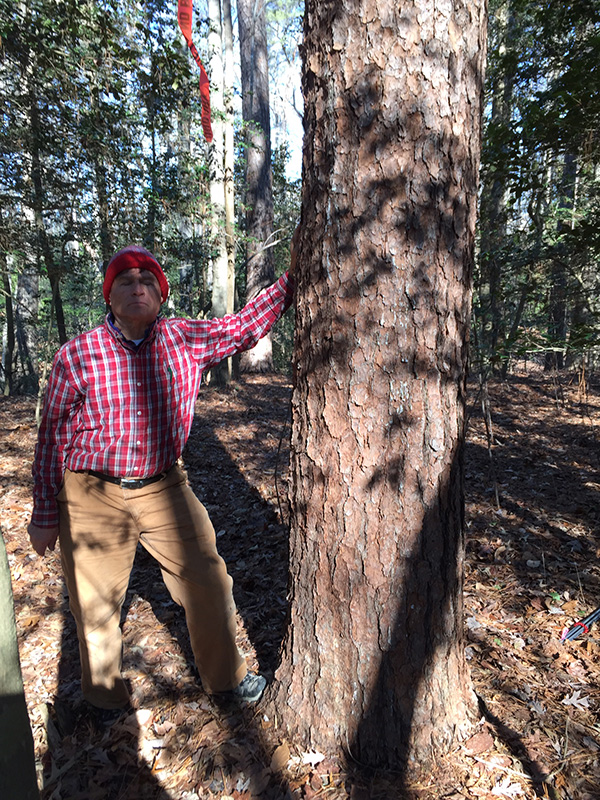
You might have a champion tree growing in your neighborhood! So get outside, and look at the trees! Happy measuring!
A special thanks to Byron, Gary, Preston, Rand, and Dave for taking the time to measure the trees in Mariners’ Park and submitting them to The Virginia Big Tree Program. Without you, we would never have known champion trees were growing here!
